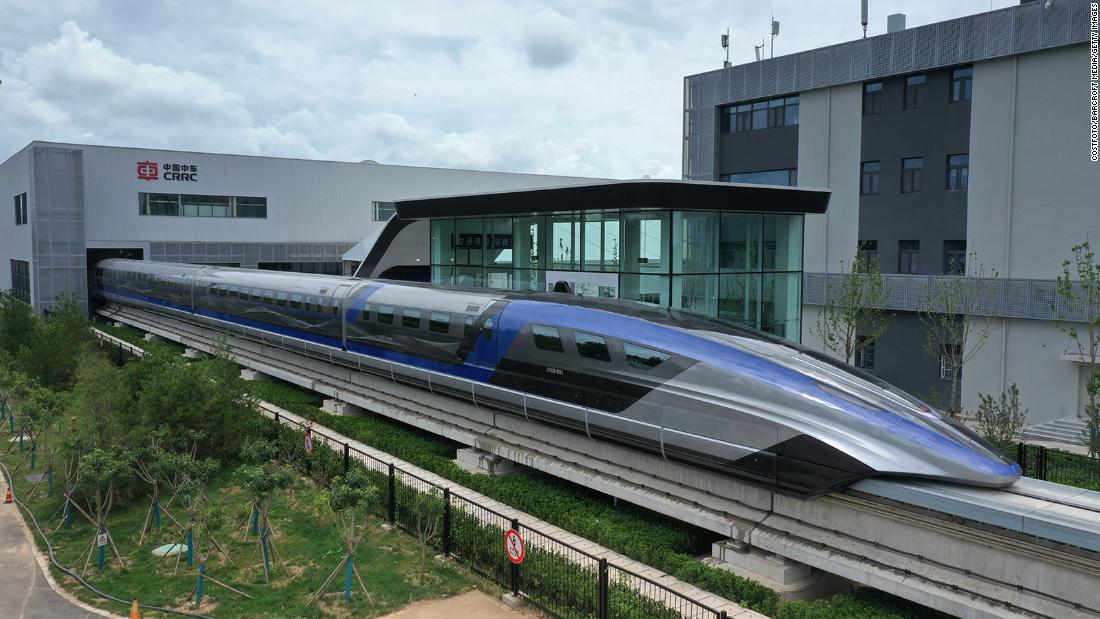A magnetic levitation bullet train that can reach speeds of 600 kilometers per hour (373 miles per hour) made its debut in Qingdao, China.
Developed by the state-owned China Railway Rolling Stock Corporation, it is considered the fastest train in the world.
“Maglev” is an abbreviation for “magnetic levitation”. The train appears to be “floating” thanks to an electromagnetic force that sends it sliding over the tracks.
Liang Jianying, deputy general manager and chief engineer of CRRC Sifang, told Chinese state media that in addition to its speed, the train emits low levels of noise pollution and requires less maintenance than other high-speed trains.
A prototype of the new maglev train was revealed to the media in 2019. That same year, China announced ambitious plans to create “3-hour transportation circles” between major metropolitan areas.
The bullet train, a priority for China
High-speed rail is a major priority in China, which aims to connect more of its large cities by train to reduce the time and expense required to travel around the world’s most populous country.
Currently, the average high-speed train in China can run at around 350 kph, while airplanes fly at 800-900 kph. Trains like the one unveiled in Qingdao this week could fill a critical gap.
However, there is one thing that prevents this train from being ready to receive travelers: the lack of complete networks of magnetic levitation tracks.
It’s that China only has one magnetic levitation line in commercial use, which connects Shanghai’s Pudong Airport with Longyang Road Station in the city. The 30 km (19 miles) journey takes about seven and a half minutes, and the train reaches speeds of 430 kph (267 mph).
Several new magnetic levitation networks are reportedly being built, including one linking Shanghai and Hangzhou and another connecting Chengdu and Chongqing.

